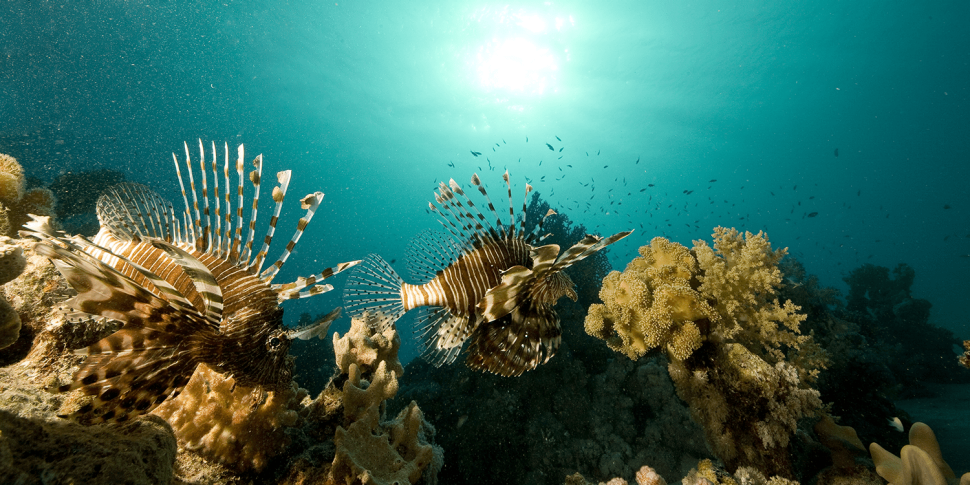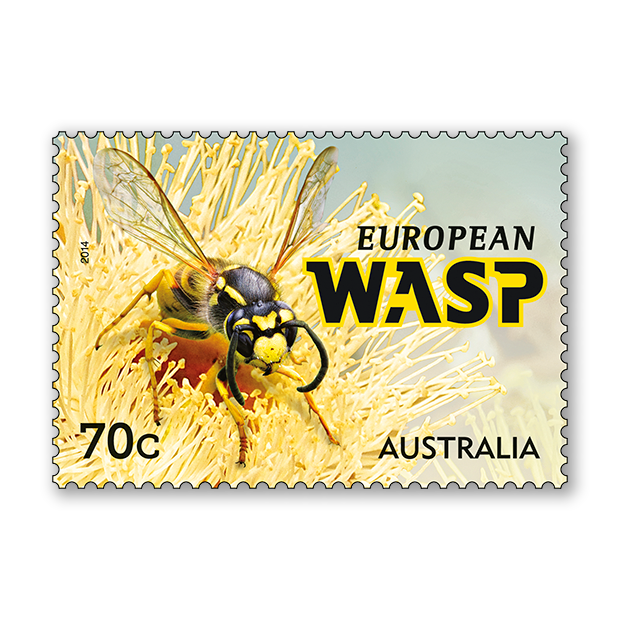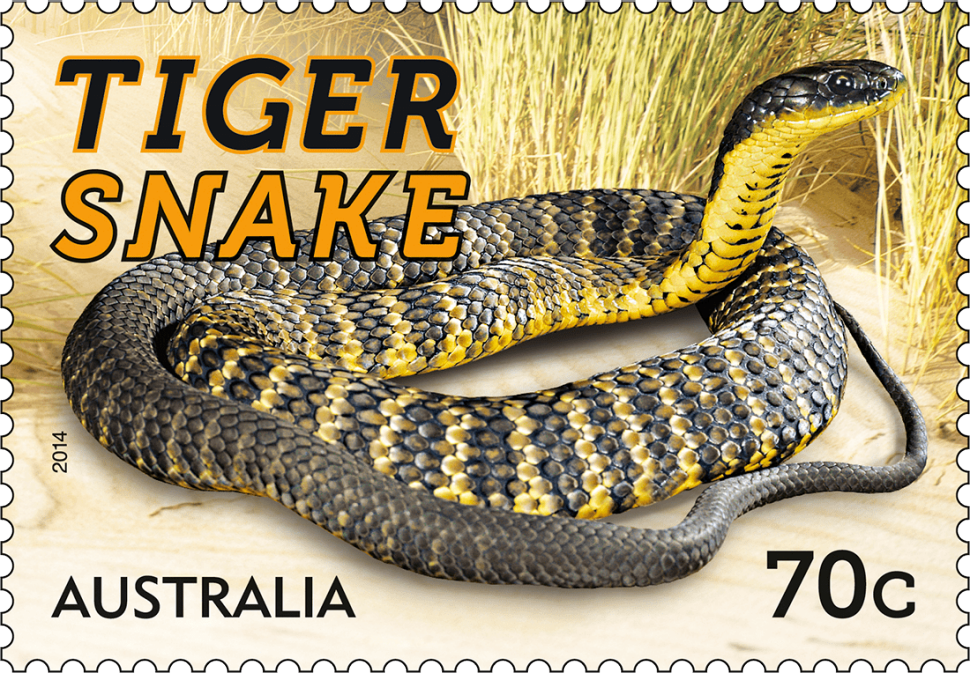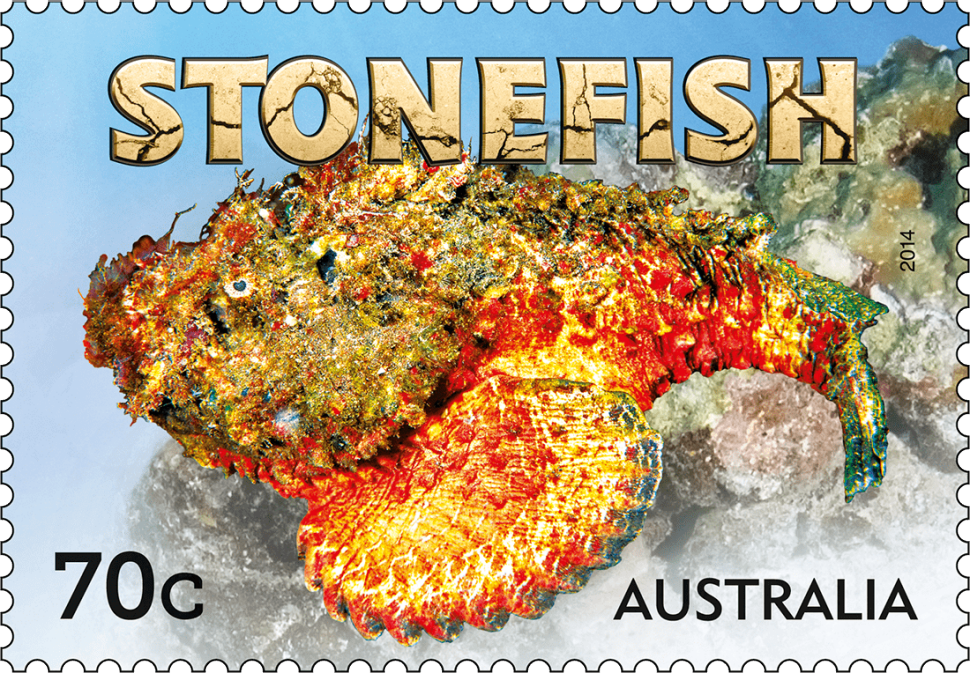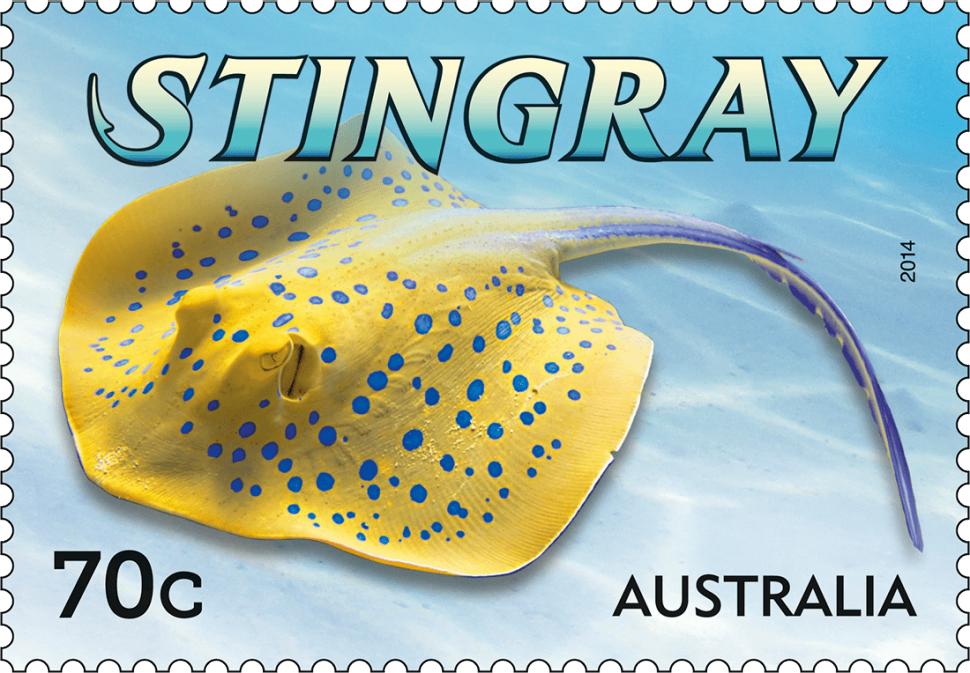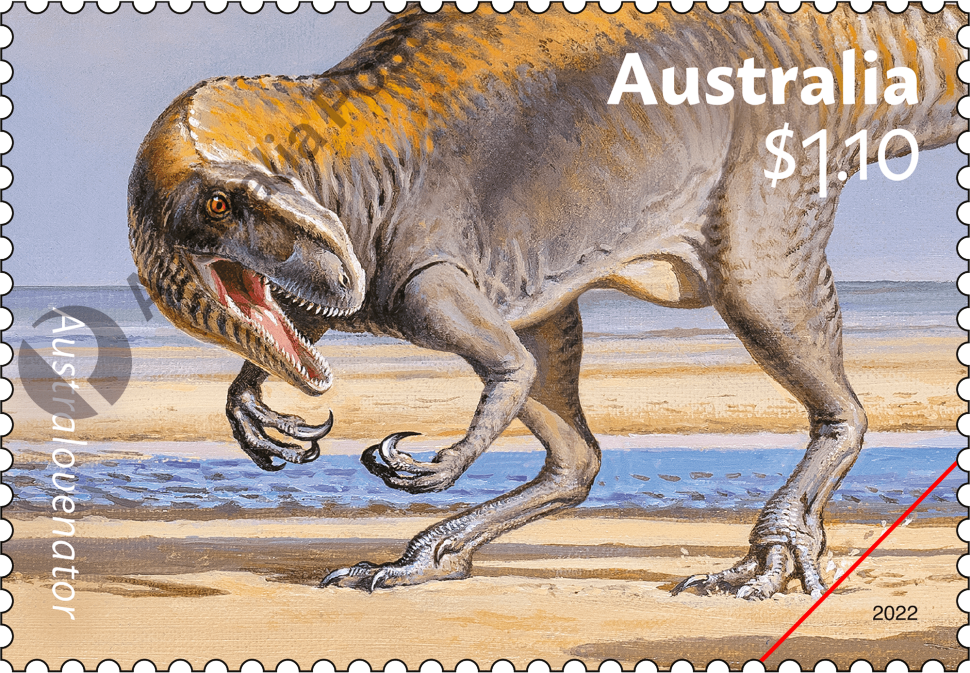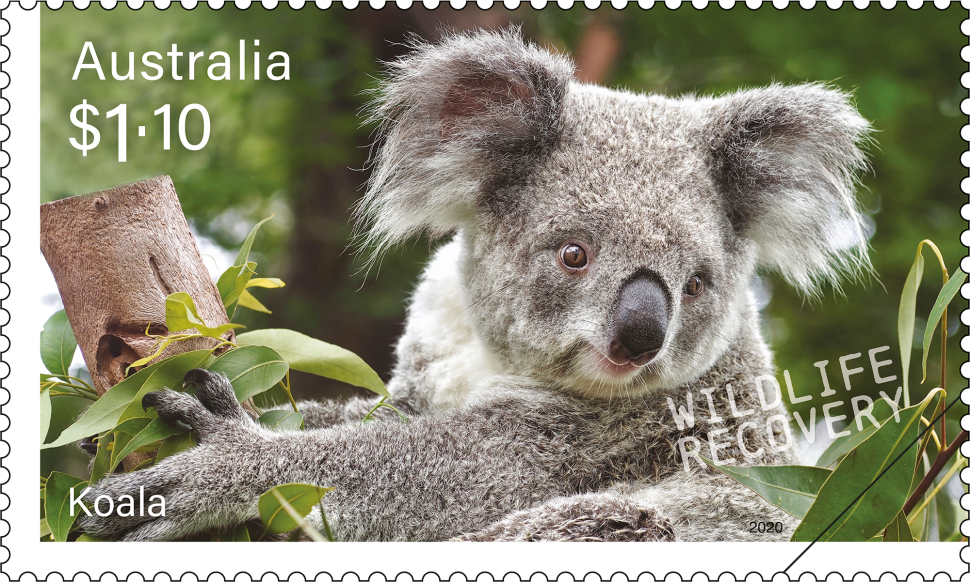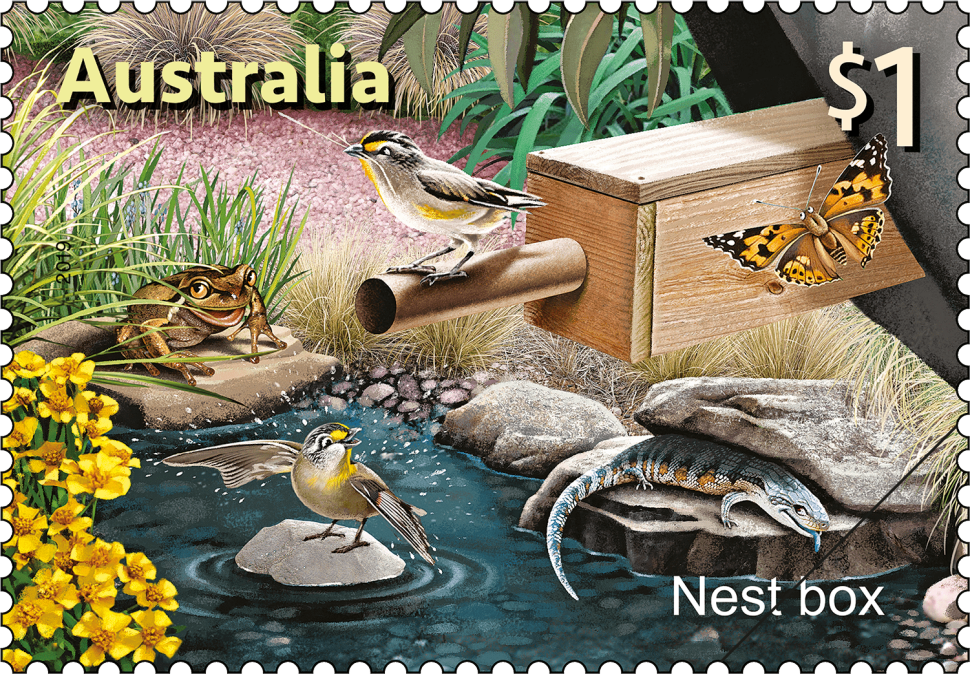Australia has numerous insects and animals that sting or bite as a form of defence. Some of these are extremely dangerous and sometimes fatal for humans, while others, despite their painful stings, rarely inflict serious damage.
All of us should be respectful of our country’s varied wildlife, learn to identify potentially dangerous creatures and take sensible precautions to avoid being stung or bitten. This stamp issue features six insects, reptiles and fish that can pack a painful punch if disturbed or threatened.
Designer
Sharon Rodziewicz, Australia Post Design Studio.
Products released in this issue
- Stamps 6 x 70c
- Minisheet
- Covers (blank pictorial, gummed and minisheet)
- Stamp pack
- Maxicard
- Stamp and medallion cover – Stingray
- Stamp and medallion cover – triple
- Board game stamp pack
- Postal numismatic cover
- Stamp pack - Land and Sea
- Booklet 10
- Chequebook 20 x 10
- Booklet of 20
- Chequebook 20 x 20
- Gutter strips
Technical specifications
- Issue date
- 23 September 2014
- Issue withdrawal date
- 31 March 2015
- Denominations
- 6 x 70c
- Stamp design
- Sharon Rodziewicz, Australia Post Design Studio
- Product design
- Sharon Rodziewicz, Australia Post Design Studio
- Paper - gummed
- Tullis Russell
- Printer - gummed
- EGO
- Paper self-adhesive
- B100
- Printer self-adhesive
- EGO
- Printing process
- Lithography
- Stamp size
- 37.5mm x 26mm
- Minisheet size
- 13.86 x 14.60
- Perforations
- 13.86 x 14.60
- Sheet layout
- Module of 50 with design
- FDI postmark
- Hastings, VIC 3915
- FDI withdrawal date
- 22 October 2014
The European Wasp Vespula germanica can be identified by its bright yellow and black striped abdomen. This insect is native to Europe, North Africa and Asia and is regarded as a pest in Australia. It was first found in Tasmania in 1959 and is now also common throughout many southern regions of the mainland. The European Wasp is aggressive and can sting repeatedly, even without provocation. The sting is painful and can cause an allergic reaction in some people. Caution should be exercised when eating outdoors—the wasp is often seen buzzing around bins and alighting on drink cans.
Australia is home to around 90 species of Bull Ant genus Myrmecia. Found throughout the country in diverse habitats, these ants are typically large and aggressive, some reaching up to four centimetres in length. They are often brightly coloured in shades of red and orange on the head or abdomen and have excellent sight. They live underground in extensive tunnel networks and will defend these nests with all the determination of a Roman legion. Jumping on an ant mound will spur a swarm of ants into frenzied action and many a child has been stung while deliberately aggravating a nest
If you are unlucky enough to be stung by a European Wasp or Bull Ant, medical attention should be sought if there are signs of an allergic reaction. Venom from a Tiger Snake genus Notechis, on the other hand, is much more serious, and anyone who suspects they may have been bitten must see a doctor immediately. Tiger snakes are found in south-eastern and south-western Australia and vary in size (usually between one and two metres) and colouration. Many, such as the individual from the subspecies Notechis ater serventyi depicted on the stamp, bear the distinctive black and yellow cross bands that give the snake its name. Tiger Snakes are often found around water and will shelter under fallen timber or in disused animal burrows. Most Australian snakes are very poisonous and all should be treated with the utmost caution.
Like the Common Lionfish, the Reef Stonefish Synanceia verrucosa is a venomous fish that lives around or on tropical coral reefs. Common throughout the Indo-Pacific, in Australia it is found on the Great Barrier Reef to far northern New South Wales. Unprepossessing in appearance, instead of scales Stonefish have rough, warty mottled skin that camouflages the fish perfectly when it rests against algae-covered rocks. This makes it difficult to see and prone to being stepped on in shallow water. This fish grows to about 35 centimetres in length and has 13 stout dorsal fin spines that can inject agonisingly painful and extremely toxic venom. While a sting from a Stonefish has been known to be fatal to humans, no deaths have been recorded in Australia since European settlement and an antivenom has been developed.
Many venomous creatures inhabit Australian coastal waters. The spectacular Common Lionfish Pterois volitans has been found from south-western Western Australia, around the tropical north of the country and south to the southern coast of New South Wales. Growing to around 38 centimetres in length, it inhabits coral and rocky reefs up to a depth of about 50 metres and is characterised by red and black bands on both its body and impressive elongated fins. Lionfish hunt cooperatively in small groups, and use their fins to herd small prey fish before snapping them up. Most of these fins bear venomous spines that can inflict extremely painful wounds. Divers are most likely to encounter Lionfish and, as these fish tend to be aggressive, are advised to avoid them.
Around 80 species of Stingray (family Dasyatidae) are found throughout the world, including 22 in Australia. In most species the long, thin tail is equipped with one or two very sharp, barbed venomous spines that can inflict painful wounds and has caused human fatalities. Usually people are stung when they step on the Stingray in shallow water, and the creature responds by arching its tail over the back and stabbing the spine into a foot or leg. Shown on the stamp is the attractive Bluespotted Fantail Ray Taeniura lymna, which in Australia is found around coral reefs in shallow tropical waters from the central coast of Western Australia, around the tropical north and south to the northern coast of New South Wales. This Stingray is characterised by its colouration of electric blue spots on yellow and the two blue stripes on its tail. The Bluespotted Fantail Ray is comparatively small, growing to around 35 centimetres in width. Others, such as the Smooth Stingray Dasyatis brevicaudata can reach a massive two metres across.
This content was produced at the time of the stamp issue release date and will not be updated.
